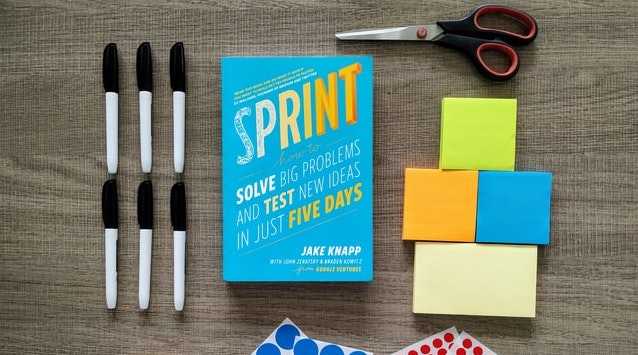‘Design thinking’ puts creativity back into learning design

Often we locate the skills we might want for ourselves, in others. We might watch a talented person do their thing and think, “I could never do that”. However, if you ask an athlete, musician, or artist for their secret sauce, often they will cite hard work and a plan over skill. In other words, hard work succeeds when applied in a process. Might that also be true of excellent learning design?
It’s certainly true of design generally, say the people at the d.school in Stanford University. Their foundational principle is that “everyone has the capacity to be creative”. Their truth is built on mindset and process; if you orientate yourself with the right mindset and apply a rigorous process, you will come up with good design.
What is good design?
But what is considered “good design”? Most people know it when they see it, but it can be hard to define. One simple definition is that something has ‘good design’ if it performs its function so well that you no longer even notice it - the ballpoint pen, the Chinese food container, the Post-it Note, and the folding chair being iconic examples.
So the argument goes that you don’t have to have the insight of László Bíró (designer of the ballpoint pen) or the luck of Arthur Fry meeting Spencer Silver (co-creators of the Post-it Note) to make well-designed things. You simply need to apply process. This is the argument behind the concept of “design thinking”: deconstruct and apply the steps inherent in good design and you can create well-designed things. Sure it’s a skill, but it’s a learned one that gets better with practice.
Principles and process
In their search to package the design process, the Stanford d.School defines eight principles:
- Navigate ambiguity
- Learn from others
- Synthesize information
- Experiment rapidly
- Move between concrete and abstract
- Build and craft with intention
- Communicate deliberately
- Design your design work
And five process steps:
- Empathize
- Define
- Ideate
- Prototype
- Test
Design thinking is an add-on, not a replacement
Process models come and go, but one that has lasted the course in our industry is ADDIE (Analyze, Design, Develop, Implement, and Evaluate). We even have ADDIE with rapid prototyping. Is design thinking just another five step model that puts new labels on how we’ve always done things? Not in our opinion, and particularly not when creating simulations. Analyzing is not empathizing, and rapid prototyping in the ADDIE development phase is too late in the process to be sure of creating good learning design. In fact we see the d.School five-step model as a straight plug-in for the Design Phase in ADDIE. So in one sense it is an add-on and not a replacement.
There’s no substitute for upfront Analysis - the first phase in the ADDIE model. Define the training need, the learner and the training environment; establish prerequisites, prior knowledge and ability levels.
Then as we move into the Design phase, we can start to address some of the design thinking principles we’ve just outlined, starting with the Empathy phase. In design thinking, empathy means changing from a systems approach to a human-centric one. You will likely have been presented with a business problem for which to create a learning solution. Empathizing means asking the learner what the problem is.
Maybe a Call Center manager is telling you that their First Call Resolution metric is too low and the team needs product training. Shadow a service team, watch them do their job and listen to them, and they might tell you a different story. Maybe the drive to lower Average Handle Times means they close calls, solve the problem off-line and do call backs. So a little bit of management training is needed rather than product knowledge.
The next step in the process--Ideation-- is about the quickfire generation of ideas. Don’t mistake it for brainstorming. Instead, the emphasis is on asking the learner about their experiences, making sure everyone is heard, working individually then coming together to present, discuss, and choose a solution to prototype.
When in the Prototyping phase, don’t think you have to start creating sample online topics. A prototype is a mock-up just to get learner reactions. A lot can be done using simple tools like PowerPoint or Google Slides stitched together. We prototype in our own simulation authoring tool.
And the final phase in design -- Testing-- simply means getting the reactions of learners to your prototype. Around five opinions should be enough to start to see patterns.This you quick and dirty data right away just by showing the prototype and seeing if the potential audience can figure it out.
It might take a few runs through the design thinking loop for the design to start to take shape. Then it’s time to drop back out to complete the remainder of the ADDIE process.
Look for a toolkit to get you started
Telling someone to Empathize, Define, Ideate, Prototype, and Test is akin to handing a novice sixteen-year-old driver the keys to the family car and telling them to take it for a spin. It’s unlikely to end well.
Thankfully there are toolkits to help you. One that caught our eye is Jake Knapp’s book “Sprint - how to solve big problems and test new ideas in just five days”.
Knapp is a recognized expert in this space. As a designer at Google he led design thinking exercises on Hangouts, Chrome, Gmail and Google Search replacing the old fashioned brainstorming sessions within organized sprints.
The book is an easy read, giving everything you need on how to organize a sprint -- from goal setting, to who should be in the room, how you manage the session, and checklists of what you will need (Post-it notes, whiteboard markers and lots of healthy snacks!)
It seems unlikely you'll get your business sponsor’s or even their learners’ attention for the five days Knapp proposes, but perhaps you might get one day, or maybe two, where you can take everyone away from their immediate work priorities and concentrate on the learning solution you have been asked to devise. There is sufficient flexibility in the sprint process that you can extract the goodness and compact it into the time you have available.
Even if you can’t commit to design sprints, reading and researching around the principles of design thinking will circle you back to perhaps the most fundamental tenet of good learning design - understand your learner.

